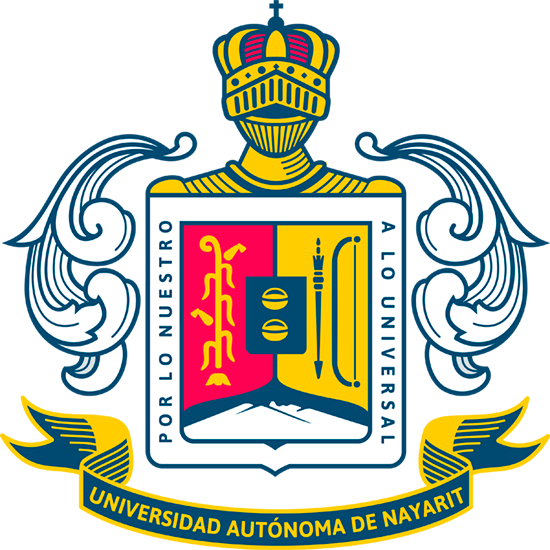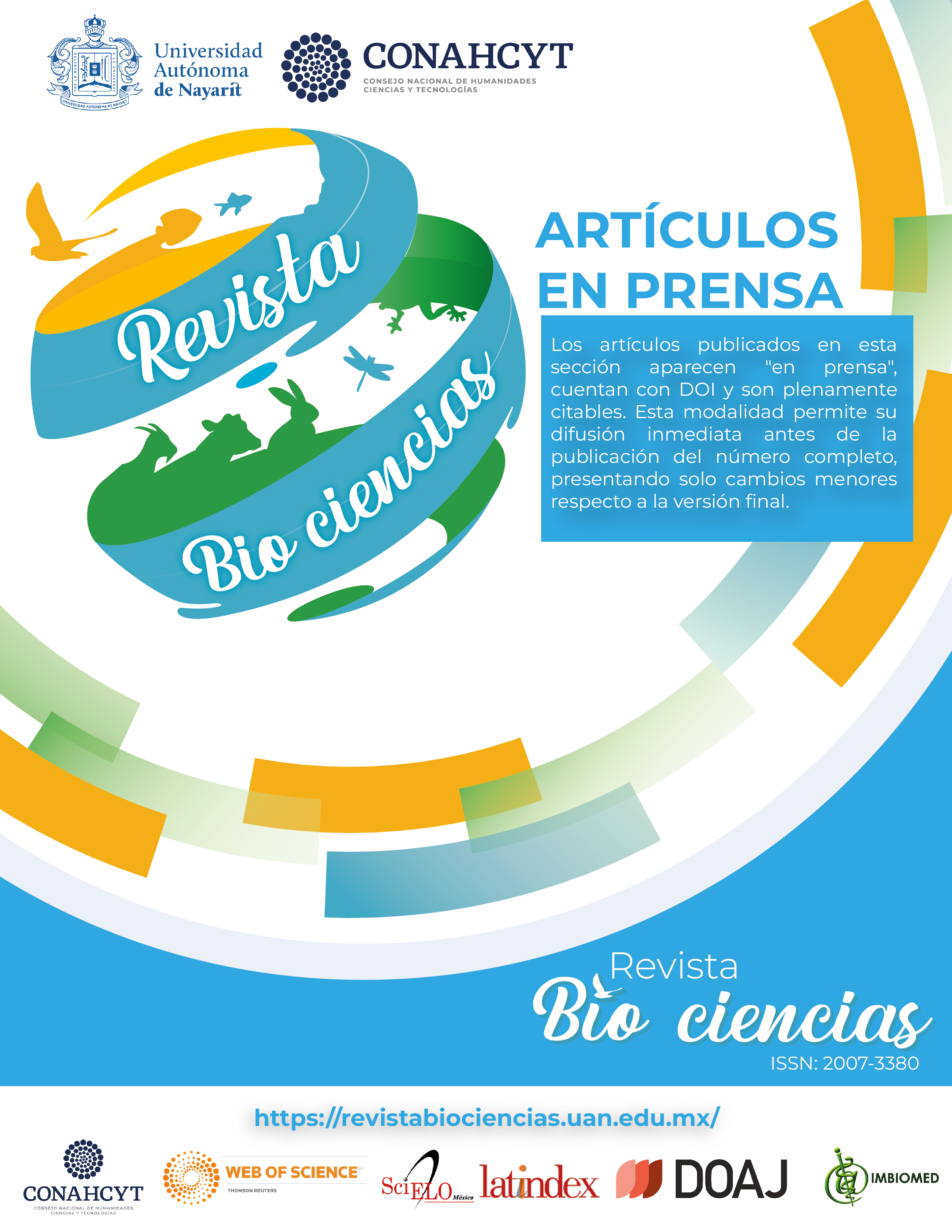Abstract
The food system presents challenges such as population growth, environmental pollution, global warming and soil degradation. Aquaponics is a sustainable system that can contribute to solving food security challenges. The objective of the study was to evaluate the biological behavior of tilapia (Oreochromis niloticus) and burrito shrimp (Procambarus veracruzanus) in an aquaponic system. An aquaponic system based on substrate beds was built. The system was matured by proliferating nitrifying bacteria. Readings of seven physicochemical parameters (ammonium, nitrites, nitrates, calcium, pH, temperature and dissolved oxygen) were taken every 15 days for 5 months, with two reading replicates. The growth and development of tilapia and crayfish was evaluated by performing biometrics of total length and weight. These were analyzed with box and whisker graphs and a one-way analysis of variance (ANOVA) was applied to them to determine significant differences between the sampling months. Growth rates were estimated and evaluated using logarithmic curves and adjustment of the coefficient of determination (R2). The developmental biology of fry showed increases in weight and length, with a survival rate greater than 50%. Regarding crayfish, only the length increased, with a survival rate greater than 50%.
References
Ani, J. S., Manyala, J. O., Masese, F. O., & Fitzsimmons, K. (2022). Effect of stocking density on growth performance of monosex Nile Tilapia (Oreochromis niloticus) in the aquaponic system integrated with lettuce (Lactuca sativa). Aquaculture and Fisheries, 7(3), 328-335. https://doi.org/10.1016/j.aaf.2021.03.002
Arredondo-Figueroa, J. L., Vásquez-González, A., Núñez-García, L. G., Barriga-Sosa, I. de los Á., & Ponce-Palafox, J. T. (2011). Aspectos reproductivos del acocil Cambarellus (Cambarellus) montezumae (Crustacea: Decapoda: Cambaridae) en condiciones controladas. Revista Mexicana de Biodiversidad, 82(1), 1. https://doi.org/10.22201/ib.20078706e.2011.1.369
Barbosa, P., Povh, J., Farias, K., Silva, T., Teodoro, G., Ribeiro, J., Stringhetta, G., Fernandes, C., & Corrêa Filho, R. (2022). Nile tilapia production in polyculture with freshwater shrimp using an aquaponic system and biofloc technology. Aquaculture, 551, 737916. https://doi.org/10.1016/j.aquaculture.2022.737916
Campos-Pulido, R., Alonso-López, A., Asiaín-Hoyos, A., Reta-Mendiola, J. L., & Álvaro-De La Cruz, D. A. (2015). La acuaponía, diversificación productiva sustentable. AgroProductividad, 8(3), 66. https://mail.revista-agroproductividad.org/index.php/agroproductividad/article/view/663
Colorado Gómez, M. A., & Ospina Correa, M. (2019). La acuaponía como herramienta de formación en tiempos de paz. Servicio Nacional de Aprendizaje (SENA). https://repositorio.sena.edu.co/handle/11404/5555
El-Essawy, H., Nasr, P., & Sewilam, H. (2019). Aquaponics: A sustainable alternative to conventional agriculture in Egypt – a pilot scale investigation. Environmental Science and Pollution Research, 26(16), 15872-15883. https://doi.org/10.1007/s11356-019-04970-0
El-Kady, A., Magouz, F., Mahmoud, S., & Abdel-Rahim, M. (2022). The effects of some commercial probiotics as water additive on water quality, fish performance, blood biochemical parameters, expression of growth and immune-related genes, and histology of Nile tilapia (Oreochromis niloticus). Aquaculture, 546. https://doi.org/10.1016/j.aquaculture.2021.737249
Flores-Aguilar, P. S., Sánchez-Velázquez, J., Aguirre-Becerra, H., Peña-Herrejón, G. A., Zamora-Castro, S. A., & Soto-Zarazúa, G. M. (2024). Can aquaponics be utilized to reach zero hunger at a local level?. Sustainability, 16(3), 1130. https://doi.org/10.3390/su16031130
FAO, FIDA, OPS, WFP & UNICEF. (2020). Panorama de la seguridad alimentaria y nutricional en América Latina y el Caribe 2020. Organización de las Naciones Unidas para la Alimentación y la Agricultura. Santiago de Chile. Chile. https://doi.org/10.4060/cb2242es
Gámez, L. C. (2018). Cultivo de acuaponia de camarón (Litopenaeus vannamei) y tomate (Solanum Lycopersicum L cv uva) en baja salinidad suministrando diferentes concentraciones de nitratos. Instituto Politécnico Nacional. México. http://www.cienciasinaloa.ipn.mx/jspui/handle/123456789/67
Gebauer, T., Gebauer, R., Palińska-Żarska, K., Císař, P., Movchan, O., Tomášek, O., Prokešová, M., Matoušek, J., Hliwa, P., Król, J., Żarski, D., Rebl, A., & Stejskal, V. (2021). Assessment of behavioural and physiological traits as indicators of suitability for European perch aquaculture. Aquaculture, 544, 737048. https://doi.org/10.1016/j.aquaculture.2021.737048
Goddek, S., Joyce, A., Kotzen, B., & Burnell, G. M. (2019). Aquaponics Food Production Systems: Combined Aquaculture and Hydroponic Production Technologies for the Future. pp. 201–229. In: Goddek, S., Joyce, A., Kotzen, B., Burnell, G.M. (Eds.). Springer International Publishing: Cham, Switzerland. https://doi.org/10.1007/978-3-030-15943-6
Goddek, S.; Joyce, A.; Wuertz, S.; Körner, O.; Bläser, I.; Reuter, M.; Keesman, K.J. Decoupled Aquaponics Systems BT—Aquaponics Food Production Systems: Combined Aquaculture and Hydroponic Production Technologies for the Future; Goddek, S., Joyce, A., Kotzen, B., Burnell, G.M., Eds.; Springer International Publishing: Cham, Switzerland, 2019; pp. 201–229. ISBN 978-3-030-15943-6
Hernández-Vergara, M. P., Cruz-Ordóñez, S. B., Pérez-Rostro, C. I., & Pérez-Legaspi, I. A. (2018). Policultivo del acocil (Procambarus acanthophorus) y tilapia del Nilo (Oreochromis niloticus) como estrategia de uso sustentable del agua. Hidrobiológica, 28(1), 11–15. https://doi.org/10.24275/uam/izt/dcbs/hidro/2018v28n1/HernandezV
Kaneshima G. K., De La Cruz Barrueto, K. N., Ponciano Quezada, M. Á., Toledo Meza, N., & Malpica, Z. G. C. (2022). Efecto de la temperatura en el crecimiento de juveniles de Oreochromis niloticus tilapia en un sistema de recambio acuícola (RAS). Manglar, 19(1), 39–44. https://doi.org/10.17268/manglar.2022.005
Lara-Espinoza, C. L., Espinosa-Plascencia, A., Rivera-Domínguez, M., Astorga-Cienfuegos, K. R., & Acedo-Félix, E., & Bermúdez-Almada, M. del C. (2015). Desarrollo de camarón Litopenaeus vannamei en un sistema de cultivo intensivo con biofloc y nulo recambio de agua. AquaTIC, 43, 1-13. redalyc.org/pdf/494/49447307001.pdf
León Cañedo, J. A. (2013). Calidad del agua y balance de Cu, Fe, Mn y Zn en un cultivo acuapónico de camarón (Litopenaeus vannamei), tomate (Lycopersicon esculentum) y lechuga (Lactuca sativa) con agua de baja salinidad y cero recambio. Tesis de Maestría. Universidad Nacional Autónoma de México. México. 132.248.9.195/ptd2013/agosto/0699503/0699503.pdf
Lorán-Núñez, R. M., Valdéz-Guzmán, A. J., & Martínez-Isunza, F.R. (2009). Estudio biológico-pesquero del “burro” Atya scabra en el río Los Pescados y río Actopan, Veracruz, México. Ciencia Pesquera, 17(1), 5-16. www.gob.mx/cms/uploads/attachment/file/541992/CP17_1_-01_Estudio_biol_gico-pesquero_del__burro__Atya_scabra_en_el_r_o_Los_Pescados_y_r_o_Actopan__Veracruz__M_xico..pdf
Muñoz-Euán, N., Mendoza-Espinosa, L., & Correa-Reyes, J.G. (2024). The Use of Aquaponic Systems to Achieve the Sustainable Development Objectives of the 2030 Agenda: A Systematic Review. In: Kumar, N. (Ed). Hydroponics. Encyclopedia of Sustainability Science and Technology Series. Springer, New York, NY. https://doi.org/10.1007/978-1-0716-3993-1_7
Palm, H. W., Knaus, U., Appelbaum, S., Goddek, S., Strauch, S. M., Vermeulen, T., Haїssam Jijakli, M., & Kotzen, B. (2018). Towards commercial aquaponics: A review of systems, designs, scales and nomenclature. Aquaculture International, 26(3), 813-842. https://doi.org/10.1007/s10499-018-0249-z
Puentes, A. J., Ramos, Y. C. M., Prado, W. E., & Hidalgo, J. Á. (2023). Supervivencia del camarón blanco (Litopenaeus vannamei) en relación con los parámetros de calidad del agua. Revista Granmense de Desarrollo Local, 7(1): 54-72. files.core.ac.uk/download/587866597.pdf
Rahman, M. H., Haque, M. M., Alam, M. A., Flura, Rahman, M. H., Haque, M. M., Alam, M. A., & Flura. (2022). A study on the specific growth rate (SGR) at different stages of tilapia (Oreochromis niloticus) production cycle in tank based aquaculture system. International Journal of Aquaculture and Fishery Sciences, 8(2), 059–065. http://dx.doi.org/10.17352/2455-8400.000079
Ramos Tameirão, E., Marcos Rubim, F., Alexsandra Felix, L., W. Fonseca Gonzaga, L., De Mello Brandão, H., David Solis Murgas, L., & Ferrante, M. (2022). Modelo farmacocinético de florfenicol en tilapias (Oreochromis niloticus) sometidas a diferentes temperaturas de crianza. Revista de Investigaciones Veterinarias del Perú, 33(6), e22433. https://doi.org/10.15381/rivep.v33i6.22433
Ronzón-Ortega, M., Hernández, M., & Pérez-Rostro, C. (2012). Hydroponic and aquaponic production of sweet basil (Ocimum basilicum) and giant river prawn (Macrobrachium rosenbergii). Tropical and Subtropical Agroecosystems, 15, S63–S71. http://dx.doi.org/10.56369/tsaes.1745
Saha, S., Monroe, A., & Day, M. R. (2016). Growth, yield, plant quality and nutrition of basil (Ocimum basilicum L.) under soilless agricultural systems. Annals of Agricultural Sciences, 61(2), 181-186. https://doi.org/10.1016/j.aoas.2016.10.001
Sawkar, R. H., Hiregoudar, L. G., & Bharadwaj, S. (2020). Aquaponics: A Modern Agriculture Technology to Overcome Water Scarcity and Drought. Journal of the Geological Society of India, 95(1), 108-109. https://doi.org/10.1007/s12594-020-1392-5
Schardong, R. M. F., Moro, M. F., & Bonilla, O. H.,(2020). Aquaponic System with White Shrimp Litopenaeus vannamei Rearing and Production of the Plants Batis maritima, Sarcocornia neei and Sporobolus virginicus. Brazilian Archives of Biology and Technology, 63, 2-11. https://doi.org/10.1590/1678-4324-2020190118
Schoor, M., Arenas-Salazar, A. P., Torres-Pacheco, I., Guevara-González, R. G., & Rico-García, E. (2023). A review of sustainable pillars and their fulfillment in agriculture, aquaculture, and aquaponic production. Sustainability, 15(9), 7638. https://doi.org/10.3390/su15097638
Serna-Lagunes, R., Zúñiga-Vega, J. J., Díaz-Rivera, P., Clemente-Sánchez, F., Pérez-Vázquez, A., & Reta-Mendiola, J. L. (2010). Variabilidad morfológica y crecimiento corporal en cuatro poblaciones de Crocodylus moreletii en cautividad. Revista Mexicana de Biodiversidad, 81(3), 713–719. https://doi.org/10.22201/ib.20078706e.2010.003.643
Somerville, C. (2014). Small-scale aquaponic food production – Integrated fish and plant farming. FAO. https://openknowledge.fao.org/handle/20.500.14283/i4021e
Zappernick, N., Nedunuri, K. V., Islam, K. R., Khanal, S., Worley, T., Laki, S. L., & Shah, A. (2022). Techno-economic analysis of a recirculating tilapia-lettuce aquaponics system. Journal of Cleaner Production, 365, 132753. https://doi.org/10.1016/j.jclepro.2022.132753
Zar, J. H. (2010). Biostatistical Analysis (5a ed.). Prentice Hall, New Jersey. 944 pp. Biostatistical Analysis | Pearson eLibrary

Revista Bio Ciencias by Universidad Autónoma de Nayarit under Creative Commons Attribution-NonCommercial 3.0 Unported License.
Based on work of http://biociencias.uan.edu.mx/.
Further permits not covered by this licence can be found at http://editorial.uan.edu.mx/index.php/BIOCIENCIAS.






